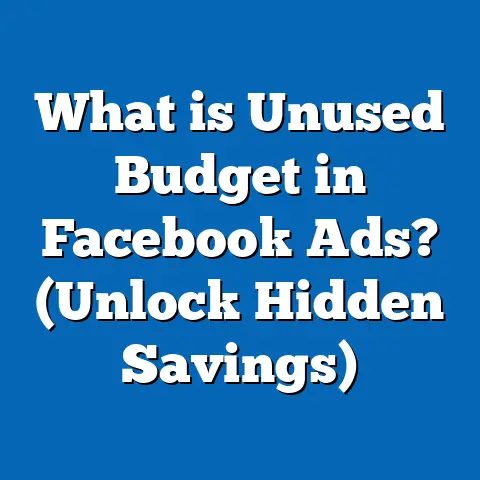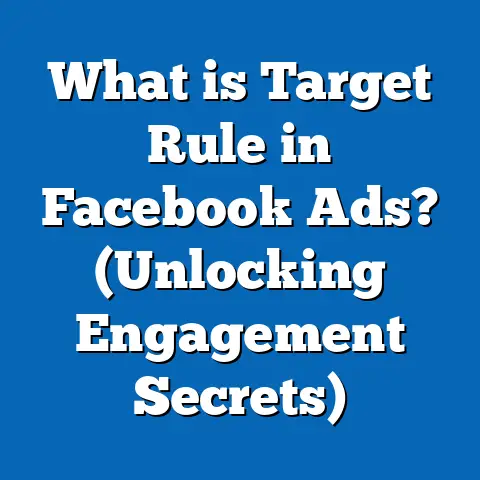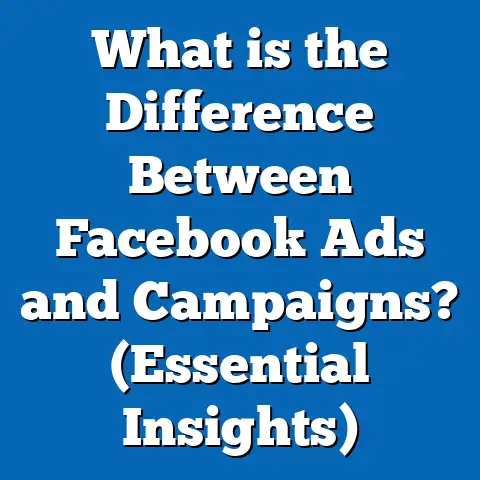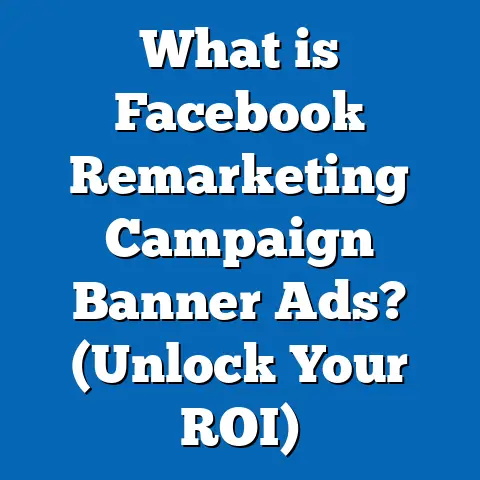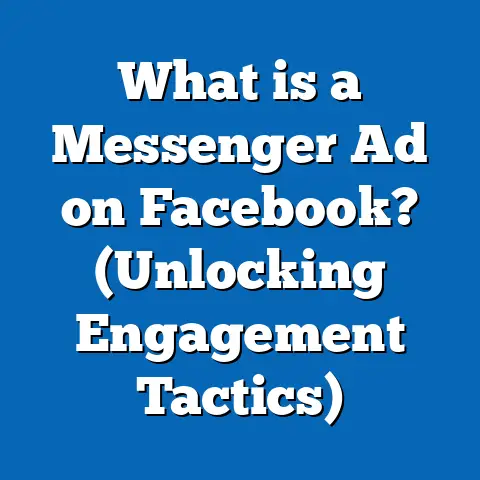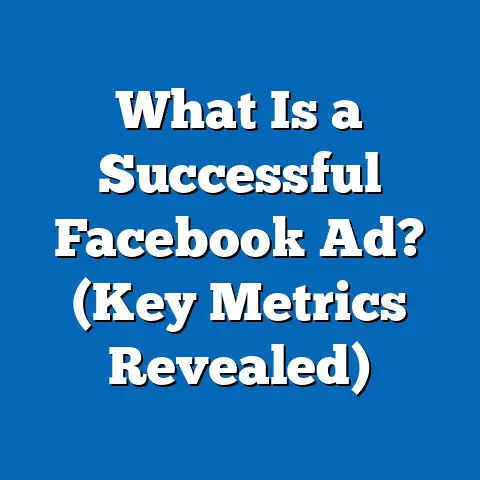What is the Difference Between Traffic and Conversions? (Key Insights)
What is the Difference Between Traffic and Conversions? (Key Insights)
Introduction: Why This Distinction Matters More Than Ever
Imagine spending thousands of dollars on Facebook ads only to see a flood of visitors to your website but hardly any sales. You might be celebrating high “traffic” numbers, but your business isn’t growing. Why? Because traffic and conversions are not the same thing—and confusing the two can cost you both time and money.
In today’s competitive digital landscape, understanding the difference between traffic and conversions is essential for any marketer or business owner who wants to maximize ROI. Traffic shows you how many people are coming to your site, but conversions tell you how many of those visitors are taking the actions that actually drive business results.
This guide dives deep into what separates traffic from conversions, how to measure and optimize both, and why mastering this distinction is crucial for successful Facebook marketing campaigns.
Understanding Traffic: The Foundation of Your Advertising Funnel
What is Traffic?
Traffic refers to the number of visitors who come to your website or landing page. It is often the first metric advertisers look at when evaluating campaign performance. Traffic can be organic (coming from search engines, social media shares, or direct visits) or paid (coming from ads on platforms like Facebook).
The quality of traffic is just as important as quantity. Not all visitors are equally valuable — some may be genuinely interested potential customers, while others might just be browsing or even accidental clicks.
Types of Traffic in Detail
- Organic Traffic: Visitors who find your site naturally through search engines or social content. This traffic is typically free but requires investment in SEO and content marketing.
- Paid Traffic: Visitors driven by paid advertisements (e.g., Facebook ads, Google Ads). This traffic costs money but can be highly targeted.
- Referral Traffic: Visitors who arrive from links on other websites or social media platforms. Referral quality depends on the source’s relevance.
- Direct Traffic: Visitors who type your URL directly into their browser or use bookmarks. This usually indicates strong brand awareness.
Why Does Traffic Matter?
Traffic is important because it represents potential customers entering your sales funnel. Without visitors, you have no audience to convert into buyers or leads. However, high traffic alone does not guarantee success.
Think of traffic as the lifeblood that keeps your online presence alive. More visitors mean more chances to make sales or generate leads — but only if those visitors are interested and engaged.
Key Metrics for Measuring Traffic
To understand traffic performance comprehensively, monitor these metrics:
| Metric | Definition | Industry Benchmark* |
|---|---|---|
| Click-Through Rate (CTR) | Percentage of people who click your ad | Average Facebook CTR: 0.9% – 1.5% |
| Cost Per Click (CPC) | Cost you pay each time someone clicks | Average Facebook CPC: $0.50 – $2.00 |
| Sessions | Number of visits to your website | Varies by industry |
| Bounce Rate | % of visitors who leave without interacting | Average 41% – 55% |
| Pages per Session | Average number of pages viewed per visit | Higher usually means better engagement |
* Benchmarks vary depending on industry and campaign type.
Common Challenges with Traffic Campaigns
- Low Engagement: Visitors arrive but leave instantly (high bounce rate).
- Poor Targeting: Ads attract irrelevant audiences.
- Click Fraud: Fake clicks waste budget.
- Ad Fatigue: Audience ignores repetitive ads over time.
What Are Conversions?
Defining Conversions
A conversion occurs when a visitor completes a desired action on your website. This action could be:
- Making a purchase
- Signing up for a newsletter
- Downloading an eBook
- Filling out a contact form
- Adding a product to a cart
Conversions are the ultimate goal of most marketing campaigns because they represent tangible business outcomes.
Types of Conversions Explained
Macro Conversions
These are primary goals directly tied to revenue or lead generation:
- Purchase completed
- Lead form submitted
- Subscription activated
Micro Conversions
Smaller steps that indicate user interest and progress toward macro conversions:
- Clicking “Add to Cart”
- Watching a product video
- Creating an account
- Signing up for a newsletter
Micro conversions are valuable because they help identify friction points and user intent.
Why Conversions Matter More Than Traffic
While traffic shows volume, conversions show value. A campaign with low traffic but a high conversion rate can outperform one with massive traffic but poor conversions. The focus should be on attracting the right visitors who are more likely to convert.
For example, if 10,000 users visit your site but only 100 purchase (1% conversion rate), it’s less effective than 1,000 visitors with a 10% conversion rate (100 purchases). The quality of visitors strongly impacts return on ad spend (ROAS).
Key Metrics for Measuring Conversions
| Metric | Definition | Industry Benchmark* |
|---|---|---|
| Conversion Rate | % of visitors who complete desired action | Average eCommerce: 2% – 4% |
| Cost Per Conversion | Amount spent divided by total conversions | Varies: $10 – $100+ depending on industry |
| Return on Ad Spend (ROAS) | Revenue generated per dollar spent on ads | 4x or higher is considered good |
| Average Order Value (AOV) | Average revenue per purchase | Varies by industry |
* Benchmarks vary widely; always compare against your niche.
Common Barriers to High Conversion Rates
- Poor website design or UX
- Slow loading pages
- Lack of trust signals (reviews, badges)
- Complex checkout process
- Irrelevant offers or messaging mismatch
The Traffic vs. Conversions Relationship: How They Connect
The Marketing Funnel Explained
Think of traffic as the top of your sales funnel — it’s the initial pool of potential customers. Conversions happen further down in the funnel, where targeted messaging, user experience, and trust convert visitors into customers.
| Funnel Stage | Focus | Key Metrics |
|---|---|---|
| Awareness | Driving traffic | Impressions, CTR, CPC |
| Consideration | Engagement & interest | Bounce rate, time on site |
| Conversion | Customer action | Conversion rate, ROAS |
Each step builds upon the previous one. Without sufficient quality traffic at the top, there are fewer opportunities to convert.
Why High Traffic Doesn’t Always Equal High Conversions
- Poor targeting: Ads may reach irrelevant audiences.
- Weak landing pages: Visitors don’t find what they expect.
- Complicated checkout: Friction stops users from completing purchases.
- Lack of trust: Visitors hesitate to convert without social proof or guarantees.
High traffic with low conversion is like having a busy store with no buyers. It wastes ad spend and marketing effort.
Real-Life Example: Traffic Without Conversions
An online electronics retailer ran a Facebook ad campaign targeting broad interests like “technology” and “gadgets.” They achieved:
- 50,000 clicks in one month
- $15,000 ad spend
- Only 200 purchases (0.4% conversion)
Despite high traffic, their cost per purchase was unsustainable at $75 each.
They then refined targeting based on past purchasers’ profiles and focused ads on specific products with clear calls-to-action.
As a result:
- Traffic dropped to 20,000 clicks
- Purchases rose to 800 (4% conversion)
- Cost per purchase dropped to $18.75
This shows why focusing on conversions over raw traffic pays off.
Data-Backed Insights: How Traffic and Conversions Perform on Facebook
Facebook Advertising Trends (2024 Data)
According to recent studies and industry reports:
- Average CTR across all industries is about 1.1%, with niches like retail seeing up to 1.59%.
- Conversion rates vary widely by vertical; eCommerce averages around 2%-4%, while finance or insurance can be below 1%.
- Mobile accounts for over 90% of ad clicks on Facebook.
- Video ads tend to have higher engagement and better conversion rates than static images.
- ROAS ranges between 2x to 8x depending on campaign optimization and industry.
Case Study: E-commerce Brand Boosting ROAS by Focusing on Conversions
A mid-sized fashion retailer spent $10,000 on Facebook ads in Q1 2024. Initially, the campaign focused on maximizing traffic with broad targeting:
Results:
- Traffic increased by 120%, but conversion rate was just 1.2%.
- ROAS was only 1.8x.
The team shifted strategy to:
- Narrow audience targeting using Facebook’s Lookalike Audiences based on existing buyers.
- Tested multiple landing pages optimized for mobile shopping.
- Added product reviews and limited-time offers.
Post-change results:
- Traffic dropped by 30%, but conversion rate rose to 4.5%.
- ROAS jumped to 5.6x.
This case shows that focusing purely on traffic can be misleading without optimizing conversions.
Industry Insights from Facebook Ad Benchmarks
| Industry | Avg CTR (%) | Avg Conversion Rate (%) | Avg CPC ($) | Avg ROAS |
|---|---|---|---|---|
| Retail | 1.59 | 3 – 5 | $0.70 | 4 – 6x |
| Finance | 0.56 | <1 | $3.00 | 2 – 3x |
| Technology | 1.20 | 2 – 3 | $1.50 | 3 – 5x |
| Education | 0.83 | 2 | $1.20 | 3 – 4x |
Practical Tips for Optimizing Both Traffic and Conversions
How to Increase Quality Traffic on Facebook
- Use Detailed Targeting: Leverage Facebook’s audience insights to reach users based on interests, behaviors, demographics, and life events.
- Create Engaging Ad Creatives: Use video content, carousel ads showcasing multiple products, and clear messaging aligned with audience pain points.
- Test Campaign Objectives: Facebook offers various objectives such as Traffic, Conversions, Lead Generation—select according to your goal.
- Utilize Lookalike Audiences: Target new users similar to your best customers for higher engagement potential.
- Retarget Website Visitors: Use retargeting campaigns to bring back people who showed interest but didn’t convert.
- Optimize Ad Scheduling: Run ads during peak hours or days when your audience is most active.
- Leverage User-generated Content: Ads featuring real customer photos or testimonials build trust and attract relevant traffic.
How to Improve Conversion Rates
- Optimize Landing Pages: Ensure fast load times (under 3 seconds), mobile responsiveness, clear headlines, compelling offers, and prominent CTAs.
- Simplify Checkout Process: Reduce form fields, offer guest checkout options, and provide multiple payment methods.
- Add Social Proof: Display customer reviews, star ratings, trust badges (e.g., secure checkout icons), and testimonials prominently.
- Use A/B Testing: Continuously test different headlines, images, CTAs, colors, and offers to identify what works best.
- Leverage Facebook Pixel Data: Track user actions like add-to-cart or purchases to create custom audiences for retargeting and optimize campaigns for conversions.
- Offer Incentives: Use discounts, free shipping thresholds, or bonuses for first-time buyers.
- Provide Clear Return Policies: Reduces anxiety about buying online.
- Implement Live Chat Support: Helps answer visitor questions instantly and reduces abandonment rates.
Deep Dive: Using Facebook Pixel for Tracking Traffic and Conversions
What is Facebook Pixel?
Facebook Pixel is a piece of JavaScript code placed on your website that tracks visitor behavior after clicking your ads. It collects data about:
- Page views
- Add-to-cart events
- Purchases
- Lead submissions
This data feeds into Facebook’s ad system for improved targeting and performance measurement.
Benefits of Using Facebook Pixel
- Enables accurate conversion tracking.
- Allows creation of Custom Audiences based on specific actions.
- Supports Lookalike Audiences creation from converters.
- Helps optimize ad delivery toward users most likely to convert.
Setting Up Facebook Pixel Correctly
- Create Pixel in Facebook Ads Manager.
- Install Pixel code on website header or use integration tools like Shopify or WordPress plugins.
- Configure standard events (Purchase, Lead) via code or Event Setup Tool.
- Test Pixel functionality using Facebook Pixel Helper Chrome extension.
- Monitor pixel data in Events Manager dashboard for accuracy.
Comparing Facebook Traffic and Conversion Tools with Other Platforms
Facebook’s advertising ecosystem is robust but not the only option available for marketers. Here’s how it compares with Google Ads and LinkedIn Ads regarding traffic and conversions:
| Feature/Platform | Google Ads | LinkedIn Ads | |
|---|---|---|---|
| Audience Targeting | Detailed interests & behaviors | Search intent & keywords | Professional demographics |
| Conversion Tracking | Facebook Pixel | Google Analytics & Conversion Tag | LinkedIn Insight Tag |
| Cost Efficiency | Generally lower CPC | Higher CPC but targeted intent | Higher CPC; niche B2B focus |
| Best For | Brand awareness & direct sales | Intent-driven search conversions | B2B lead generation |
Example Use Cases:
- If you want broad brand awareness with rich audience targeting—Facebook excels.
- For intent-based buying intent (search queries), Google Ads often delivers better conversion rates.
- For B2B lead generation targeting professionals by job title/company size—LinkedIn provides unmatched precision despite higher costs.
Many businesses combine these platforms strategically along their sales funnel for maximum effect.
Advanced Insights: Leveraging Data Science and AI for Better Results
How AI Enhances Facebook Campaigns
Facebook uses machine learning algorithms that optimize ad delivery based on conversion data collected via Pixel events and user signals such as device type, location, time of day, etc.
The more conversion data in the system:
- The better Facebook knows which users are likely to convert.
- It can automatically adjust bids and placements in real time.
This is why campaigns optimized for conversions generally perform better than those optimized just for clicks or impressions.
Predictive Analytics for Advertising Strategy
Marketers increasingly use predictive analytics tools that combine historical campaign data with external datasets (weather patterns, economic indicators) to forecast performance metrics like:
- Which audience segments have the highest likelihood of converting
- Best budget allocation between traffic-driving vs conversion-focused campaigns
- Optimal timing for ad delivery
By applying these techniques alongside Facebook’s AI tools, advertisers can squeeze more value from their budgets.
Detailed Case Study: Multi-channel Campaign Driving Both Traffic & Conversions
Background:
A SaaS company launched a new project management tool in early 2024 targeting startups and small businesses via Facebook ads combined with Google search campaigns.
Strategy:
Traffic Phase:
- Used broad interest-based targeting on Facebook focusing on startup-related interests.
- Created engaging video tutorials explaining tool features.
Conversion Phase:
- Retargeted engaged users with offer discount codes and free trials.
- Optimized landing pages with clear CTAs (“Start Free Trial”).
Results after six months:
| Metric | Initial Campaign | After Optimization |
|---|---|---|
| Monthly Traffic | 40,000 | 25,000 |
| Conversion Rate | 1.5% | 5% |
| Cost Per Acquisition | $90 | $35 |
| Monthly Revenue | $60,000 | $110,000 |
The company reduced non-converting traffic while increasing conversion rates significantly by aligning messaging across platforms and focusing on retargeting strategies enriched by pixel data insights.
Common Misconceptions About Traffic and Conversions
- More traffic always means more sales: Not true if the audience isn’t targeted or converting well.
- Conversion optimization means lowering prices: It’s about removing friction and increasing relevance—not necessarily discounting.
- Traffic campaigns don’t impact revenue directly: Indirectly they do by filling the funnel with leads.
- High bounce rate always means bad traffic: Sometimes visitors find answers quickly; context matters.
- Conversions only mean purchases: Leads count as conversions too depending on business goals.
Understanding these nuances helps marketers set realistic expectations and choose appropriate KPIs.
Tools & Resources for Tracking & Optimizing Traffic & Conversions
Essential Tools:
- Facebook Ads Manager: Campaign setup, reporting.
- Facebook Pixel & Events Manager: Conversion tracking.
- Google Analytics: Website behavior analysis.
- Hotjar / Crazy Egg: Heatmaps & user recordings for UX insights.
- Unbounce / Instapage: Landing page testing platforms.
- Optimizely / VWO: A/B testing software.
Using these in combination helps create a data-rich environment for continuous improvement.
Conclusion: Mastering Both Sides of the Coin for Business Growth
Traffic is vital—it fuels your marketing engine by bringing potential customers into view—but without conversions, it’s just noise that doesn’t translate into profit.
Conversions are where business growth happens; they turn attention into action and prospects into loyal customers.
By understanding their differences deeply:
- You can design smarter campaigns that attract high-quality visitors.
- Optimize user journeys that encourage desired actions.
- Use data-driven decisions supported by modern tools like Facebook Pixel and AI-powered optimization.
For marketers and business owners alike, balancing efforts between growing traffic and improving conversions is the path to sustainable success in Facebook advertising — and digital marketing as a whole.
If you want me to provide additional sections such as detailed tutorials on setting up campaigns or more case studies in specific industries (e.g., B2B vs B2C), just ask!

